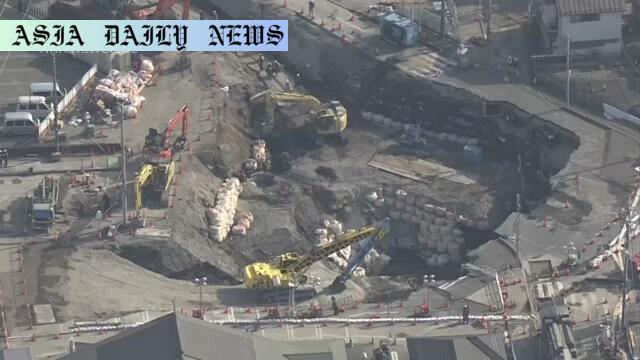Wastewater: Saitama lifts voluntary restriction request to aid infrastructure repair after sinkhole accident in Yashio City.

Introduction to Wastewater Reduction in Saitama
The Saitama Prefectural Government, located just north of Tokyo, officially lifted its request for residents to voluntarily reduce wastewater discharge. As of noon this past Wednesday, the long-standing appeal, enforced across 12 cities and towns, has concluded. The request, first implemented on January 28, was a precaution necessary after a dramatic sinkhole incident caused significant damage to underground infrastructure systems in Yashio City.
The Cause of the Wastewater Initiative
The restrictions originated from a devastating incident when a truck fell into a sizable sinkhole at a busy Yashio City intersection. Officials immediately took steps to minimize further damage to the sewage system and to prioritize rescue operations for the truck’s driver, who remains unaccounted for. By decreasing wastewater flows into the impaired pipelines, the prefectural government ensured that repair work could operate under safer and less hazardous conditions.
Relief Expressed by Residents
Residents in affected areas have expressed joy and relief over the lifting of the restrictions. Many shared their varied and innovative strategies to comply with the request, ranging from reducing laundry and bathing to using disposable items like paper cups to limit household wastewater. For weeks, citizens showed a collective effort and a sense of responsibility to minimize strain on the infrastructure.
For instance, a woman in her 70s stated she had limited her domestic water use and was eager to restore her daily household activities, such as thorough cleaning and regular laundry sessions. Others admit that the restrictions were challenging but emphasized understanding the rationale for putting public safety first.
Infrastructure and Repair Efforts
The extensive nature of the sinkhole damage brought attention to the aging infrastructure across the region. Emergency repairs and inspections were conducted by dedicated teams around the clock in Yashio City and beyond. Officials utilized this moment as an opportunity to review maintenance plans and preventive measures for underground pipelines. Observers noted how this incident highlights the fragility of urban sewage systems, particularly in areas facing severe weather and geological challenges over time.
Community Spirit and Concerns Over the Missing Driver
While there has been an air of gratitude for the successful mitigation of the issue, concern remains for the missing truck driver. Many residents noted how this personal angle to the story amplified their sense of empathy and responsibility in fulfilling the wastewater reduction request. Authorities are conducting further investigations and ongoing search-and-rescue efforts with the hope of bringing closure to this distressing element of the story.
Looking Toward the Future
As Saitama moves forward, officials have emphasized the importance of monitoring and upgrading public infrastructure to prevent future crises of this magnitude. From training swift emergency-response personnel to implementing better sinkhole detection and sewage pipeline care, the lessons from this incident will serve as a significant turning point in the way the region approaches urban planning.
The wastewater reduction effort may have caused temporary discomfort to citizens, but it also underscored the resilience and unity necessary in times of crisis. Such experiences leave a lasting impression, fostering communal cooperation and addressing longstanding infrastructural issues that often go unnoticed in daily life.
Commentary
Reflection on the Collective Effort
The wastewater restriction story in Saitama Prefecture is a commendable example of community resilience and cooperation. By adhering to voluntary reduction requests, residents prioritized the greater good above their daily conveniences. Reducing baths, limiting laundry, and refraining from regular cleanups may sound trivial, but over weeks, these collective gestures played a pivotal role in helping authorities restore normalcy.
The Unseen Challenges
Infrastructure challenges in urban areas are often overlooked until they lead to significant disruptions, as seen with the sinkhole in Yashio City. This event serves as an important reminder of how fragile our essential services can be. It wasn’t just the truck or the sinkhole that needed immediate attention; it was also the sprawling sewage system underneath, something that residents and officials usually take for granted. Keeping both functioning and coordinated during emergencies is no small feat.
Balancing Gratitude with the Need for Preparedness
Although the lifting of restrictions has brought relief, the incident underlines the need for preventive measures and future planning. Whether it’s tighter inspections, maintaining infrastructure, or offering residents more information about actionable steps during crises, there is ample room for improvement. While it is heartening to see gratitude among residents, this situation must also spur conversations about long-term sustainability in urban systems.
In conclusion, Saitama Prefecture’s response to a challenging sinkhole situation highlights the importance of united action and forward-thinking governance. Hopefully, such incidents will inspire better preparation and broader awareness among both citizens and local administrations to create resilient urban environments.


